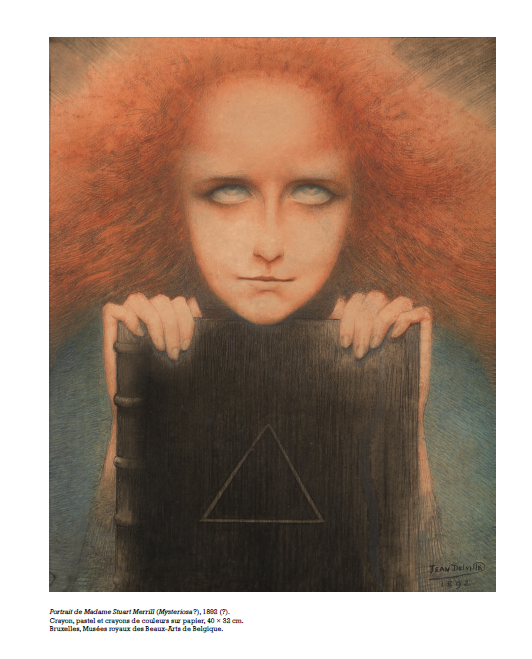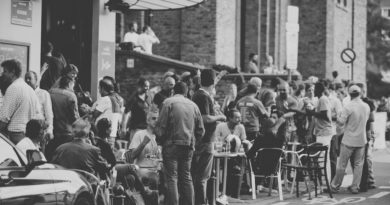Is the famous Portrait de Madame Stuart Merrill a real or fake Jean Delville?
Most Belgians are no longer aware, but in the late 19th and early 20th century – that brilliant fin de siècle period – Belgium was a world leader in art, along with France. Jean Deville, the figurehead of symbolism worldwide, remains an artist whose works we know well (e.g. The School of Plato at Orsay, The Love of Souls in the Musée d’Ixelles), but whose life and even name are less familiar.
The discovery of The Man and the Crows in 2016 generates a buzz
At the beginning of 2016, Jean Delville created a stir in the Belgian media when an unknown work of his, L’Homme aux corbeaux (translated as The Man and the Crows), neglected in the archives of the Bibliothéque royale, was found. Articles, TV programs, an exhibition in the Musée fin-de-siècle…Delville and his The Man and the Crows were on the front pages.
A few months later, Editions Liénart published Jean Delville: la contre-histoire (now available in English as Jean Delville: The True Story). Relying on previously unknown primary sources, the book uncovers the real life of this great artist, who until then was cloaked in a sort of ‘official truth’, far removed from the genuine truth.
This first biography of Jean Delville restores context to his esoteric involvement with the Freemasons and the theosophists, whom he represented in Belgium, and explains why, following the failure of the ‘New Christ’ Krishnamurti, Delville had a burn-out, left his family and settled in Mons in 1932 with a young woman.
The official history claims that Delville produced nothing of value during the Mons years – an excessive statement. But thanks to the documents and works discovered during the preparation of this book, unknown Delville treasures have been revealed, in particular his very strong and remarkable attraction to art deco, an influence no-one knew about before.
Portrait of Mrs Stuart Merrill: painted in 1892 or 1944?
During the years of the Second World War, a young man helped Deville in his daily life. His name was René Harvent and he became a well-known sculptor. Harvent kept large archives of Delville works, archives that were gradually sold to various dealers and collectors during the 2000s.
At the beginning of the 1970s, several books revived interest in the famous Belgian symbolist period, notably the renowned Le symbolisme belge (Belgian Symbolism) by Francine-Claire Legrand. These publications devoted many pages to one of Delville’s major works, the Portrait of Mrs Stuart Merrill, sold at Sotheby’s in New York, then at Christie’s in London, and finally purchased in 1998 by our Musée Royal des Beaux-Arts.
The work is dated 1892, a fact apparently undisputed, although René Harvent wrote that he saw with his own eyes Delville create this painting in Mons in 1944. He claims he remembers it very well, as the Allied bombers were flying overhead on their way to Germany. In his records, Harvent sets out convincing arguments to confirm this new dating.
The question of whether the Portrait of Mrs Stuart Merrill dates from 1892 or 1944 is far from trivial: if the second date in the right one – which I personally believe is the case – it means Delville’s whole oeuvre will have to be revisited and, to use the modern term, upgraded.
Despite the discovery of The Man and the Crows making headlines, the revelation of a doubt about the dating of one of Delville’s three most famous works has not been commented on at all, even though Jean Delville: The True Story is being widely distributed by Gallimard. No comment from the Musées Royaux, nor from their chief curator Michel Draguet. Are they trying to avoid uncomfortable questions about the purchase of a major painting whose signature may be partially false? Or are they too lazy to check if the paper and colour pencils used date from the late 19th or mid 20th century? It should not be very difficult to give an answer. We are expecting one.




